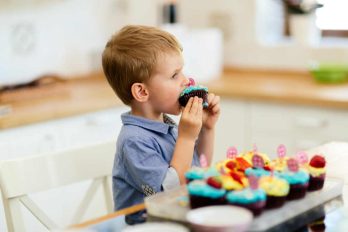When considering air pollution, the majority of us think of outdoor air. However, given that many kids spend more than 90% of their time inside, indoor air quality might be even more important. The EPA estimates that indoor air pollution levels may be two to five times greater than outdoor pollution levels. There is not much ventilation in today’s energy-efficient homes to improve indoor air quality.
Compared to adults, children inhale and retain more air pollution per unit of body weight. Children are more vulnerable to the effects of polluted air since their lungs and elimination systems are still developing. Children’s body cannot handle more pollutants once they are already overburdened. They might start to react negatively to exposures like fresh paint, new carpet, cleaning supplies, mattress and furniture off-gassing, dust, mold, or pollen. A toxic overload youngster might become seriously unwell from even small exposures. According to estimates, more than 40 million individuals currently suffer from an environmental sickness as a result of harmful or allergic reactions to numerous environmental contaminants.
Symptoms of Indoor Air Pollution
- Watery eyes
- Sneezing
- Coughing
- Headaches
- Congestion
- Fatigue
- Trouble breathing
Allergens, tobacco smoke, or chemical exposure can cause asthma symptoms to appear or exacerbate already present symptoms. There may be a large list of other baffling issues with environmental sickness that are hard to identify.
Several distinct sources are releasing particles or gases into the air in your house. The most crucial room, though, is usually the one where your kids sleep. Their bodies regenerate as they sleep. Your kids’ bodies enter a deep healing phase when they sleep at night, and their immune systems work to get rid of any pollutants. If there is an added burden of toxins in the bedroom air, cleansing is challenging for the body. How long do your kids stay in their bedrooms? In addition to sleeping at night, a lot of kids are also napping or playing in their rooms during the day.
Lowering Indoor Air Pollution
First and foremost, it’s essential that infants and young children sleep on an organic mattress that doesn’t off-gas. All mattresses that include vinyl, polyurethane foam, fire retardants, or other harmful components need to be replaced immediately. Furthermore, the majority of bed frames, cribs, cradles, bassinets, changing tables, dressers, cupboards, and bookshelves are constructed from pressed or composite wood products that emit formaldehyde or contain paints or varnishes that also do the same. Replace this furniture, if possible, with solid wood pieces that have natural finishes. Another significant toxin that can discharge toxins almost continually is carpet. Paints, building materials, personal care items, and cleaning supplies can all release toxins into the air. For kids, any mold, dust mites, or animal dander in the bedroom can be a major issue.
Ways to Remove Allergens from Children’s Bedrooms
- Invest in a HEPA room air purifier that eliminates odors, viruses, pollutants, and chemicals
- Put non-toxic 100% organic cotton dust-mite-proof covers on pillows, mattresses, and box springs
- Think about getting a nontoxic organic children’s mattress
- Reduce indoor humidity to less than 50% to prevent the growth of mold
- Immediately address any plumbing, roof, and other water leaks, and securely remove any mold throughout the whole house
- Use a HEPA-filtered vacuum twice a week to clean the house (more frequently if you have pets)
- Regularly vacuum upholstered furniture, curtains, and mattresses
- Use a moist cloth to wipe off hard surfaces and avoid using hazardous cleaners
- To lessen exposure to pet dander, keep allergy-causing animals out of the bedroom or bathe your animals once per week
- Wash linens once a week in hot water
- Wash plush toys frequently
- If at all feasible, replace carpet with natural, non-toxic rugs that you can wash frequently
- Keep cigarettes out of the house
- When possible, try to get solid wood furniture rather than composite or particle board
- Before bringing composite wood goods within, let them off-gas outside for a few days or weeks
- After bringing new furniture inside, carefully ventilate the space. Everyday window opening will enhance interior air quality
- Common indoor plants like spider plants and bamboo palms may aid to filter the air




